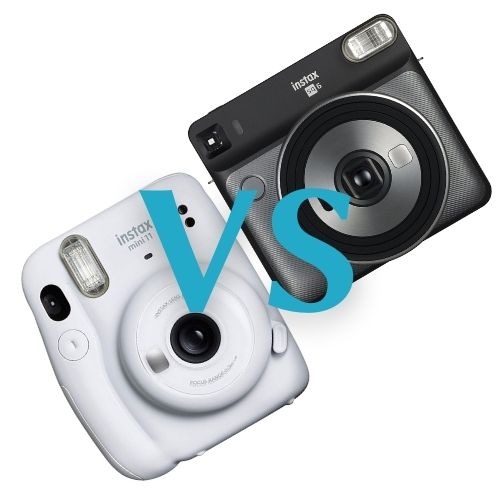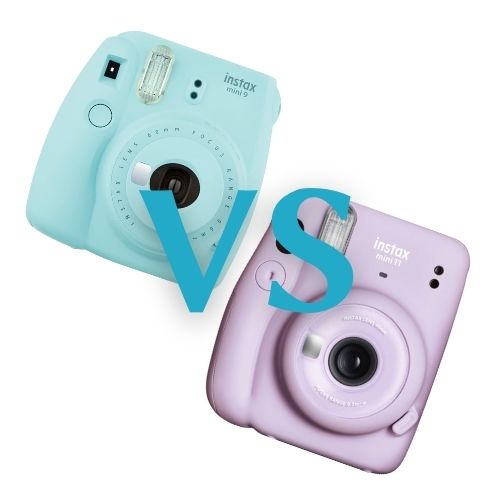
The Fujifilm company is well known for its cameras and films. When similar products get released, like the Instax Mini 8 and Instax Mini 25, it’s difficult to choose one over the other, without knowing more about each of them first. This short presentation will take a look at both of these cameras and point out the similar features while talking more about their differences, in hopes that it will help you decide which one to get.
Common features
Off the bat, both these gadgets are instant cameras and among the common characteristics of these two devices we noticed the following:
- same type of lens, 60 mm Fujinon
- the automatic flash setting
- focus range between 0.6m and infinity
- the use of the same type of film, Instax Mini,
- electric film feeding.
Having mentioned the film used, we should also mention that the pictures taken measure 62 mm x 46 mm. There are some details that both models lack, such as the tripod socket, continuous 2 shots, self-timer, and external flash.
What sets them apart
It makes little sense to talk about the common features of the machines in great detail, as most people are interested in knowing why is one model better than the other. It’s the differences that point out which one is better, so let’s get started!
1. Their appearance
At first sight, these two camera look quite different. The Mini 25 has curvy sides for a better grip while the Mini 8 looks as if it could slip off your hands if your grip is not good enough. They appear to be the same size, but at 116 x 118.3 x 68.2 mm and 304 grams, the Mini 8 is heavier than the Mini 25 that measures 112 x 121 x 50.5 mm and weights 275 grams.
2. The viewfinder
While both cameras have a viewfinder feature, they use different technologies. Mini 8 is equipped with an Optical 0.37x Real Image viewfinder that has a Target Spot. The Mini 25 has an Inverted Galilean finder instead. Their lenses are identical, as mentioned above, however there is something that sets apart. The Mini 8 comes with a close-up lens that Mini 25 doesn’t have, so it will have to be purchased separately.
3. The film exposure
Some people are interested in locking the exposure of the film, but this is impossible to do with these two cameras. However, the difference between them is that for the Mini 8 the exposure modes are completely manual whereas for the Mini 25 you choose one of the modes: automatic and program.
4. The batteries used
The 2 models need batteries to function, but the difference is that you’ll need AA batteries for the Mini 8 and Li-Ion or rechargeable batteries for the Mini 25. However, you’ll only need 2 batteries for either model. There’s a slight difference when it comes to their flash as well: that of the Mini 8 has a range of up to 2.7 meters while that of the Mini 25 reaches up to 2.5 meters.
5. Their flash
On the former model, the flash is always on while operating the camera, meaning you’ll have to pay some attention to the conditions under which you take your pictures. Unless it’s a certain effect you’re after, make sure there isn’t too much light on the subject, or the picture will be overexposed. However if you take your time to compose the image before triggering the shutter, the photos will look very similar to those taken with a Polaroid camera.
Both cameras include auto-dimming features, however the Mini 25 features an automatic low-intensity flash that helps in taking better pictures. The flash shooting distance measures between 0.6 meters and 2.7 meters for the Mini 8, and between 0.5 meters and 2.5 meters for the Mini 25 model. It’s clear that the differences in this regard are barely noticeable.
6. The shutter
Things don’t become more simple on the later camera, as it has two shutter buttons, depending on the type of photo want – portrait or landscape. The pictures taken with this model however look faded and have a vintage effect, as the image is not very sharp nor the colors very bright, even under the right conditions.
The speed of the shutter probably makes the biggest difference between these 2 cameras. The Mini 8 has a maximum and fixed speed of 1/60 second while the speed of the Mini 25 ranges between 0.3 seconds and 1/400 second.
7. Digital copies
Another significant difference is that if you want a digital copy of your pictures, you’ll have to get the Mini 25 as it has a memory card slot. However, it can only save images in .jpeg format and the card accepted is either one of these: SD, SDHC, SDXC. Despite the memory card, there is no other digital feature installed on the Mini 25.
8. Selfie mode
Taking selfies is also easier with the Mini 25 for it has a mirror on the front, next to the lens, to help you get the right angle. The Mini 8 sadly lacks the mirror, so your selfies could be a waste of film. However, Fujitsu gives you the option to purchase the self-shot mirror for the Mini 8 separately.
The Mini 8 camera lacks an LCD, while the Mini 25 features one with several options, such as the landscape mode, grayscale control and a forced mode feature. In this regard, we can say the Mini 25 is superior as it provides more picture taking options.
Some last thoughts
It’s not too difficult to see which camera is better when the choices are Instax Mini 8 and 25. The Instax Mini 25 definitely has many more features and gives its user the possibility of having digital copies of their photos as well. For those who want printed pictures that look as if taken with a Polaroid camera, the Mini 8 could be a better option.
Hopefully this short presentation helped you in making a decision after being better informed.







